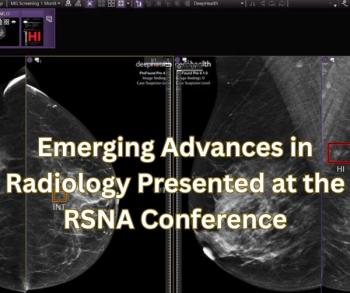
Sterling signs deals with Access and GE
Sterling signs deals with Access and GESterling Diagnostic Imaging of Greenville, SC, announced late last month new OEM agreements with Access Radiology and GE Medical Systems for teleradiology and laser printer technology. The GE agreement
Sterling signs deals with Access and GE
Sterling Diagnostic Imaging of Greenville, SC, announced late last month new OEM agreements with Access Radiology and GE Medical Systems for teleradiology and laser printer technology. The GE agreement creates a new promotional channel for Sterling's Helios dry laser printer line, while the Access deal is part of Sterling's effort to assemble a broad range of teleradiology and PACS products through OEM agreements rather than in-house software development (
PNN
5/97).
Under the Access deal, the Natick, MA, software vendor will provide its Access Framewave teleradiology system to Sterling, which will offer the product as part of its PACS line. Framewave will enable users of Sterling's Linx networking systems to send images outside of a hospital network, and the software can also be incorporated into PACS networks sold by Sterling.
The Framewave product is DICOM-compatible and uses a wavelet compression algorithm, a more advanced form of lossy compression than JPEG, and runs on either Windows NT or Unix operating systems. In addition to Framewave, Sterling and Access agreed to jointly develop new compression server technology that the companies claim will expand existing server technology by a factor of 10, allowing more image and information data to be managed through standard telecommunications networks.
The GE agreement is specifically targeted at ultrasound, where GE has made massive R&D investments in recent years. GE has agreed to use Helios printers in conjunction with its Logiq 700 MR ultrasound scanner to demonstrate Voxel Image Processing, a recent upgrade to the scanner. Sterling acquired the Helios printer line from Polaroid late last year.
Newsletter
Stay at the forefront of radiology with the Diagnostic Imaging newsletter, delivering the latest news, clinical insights, and imaging advancements for today’s radiologists.




























